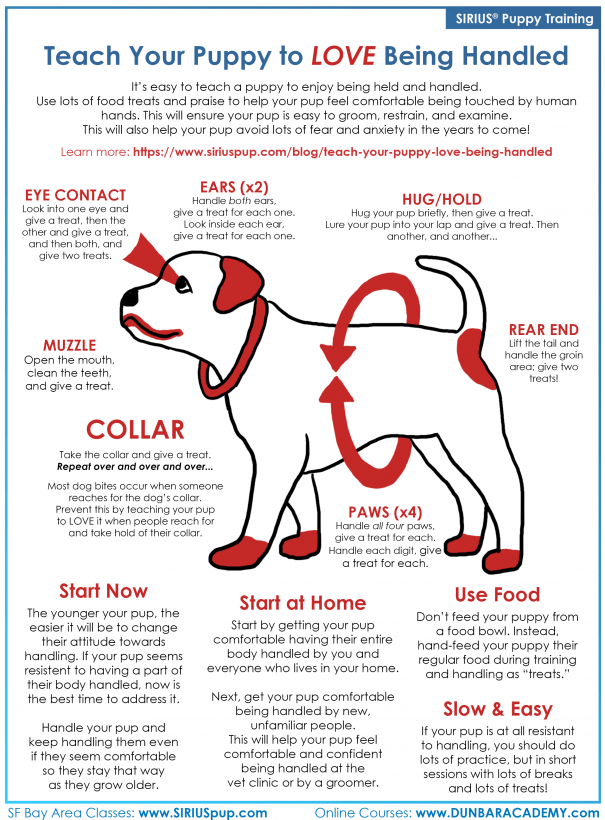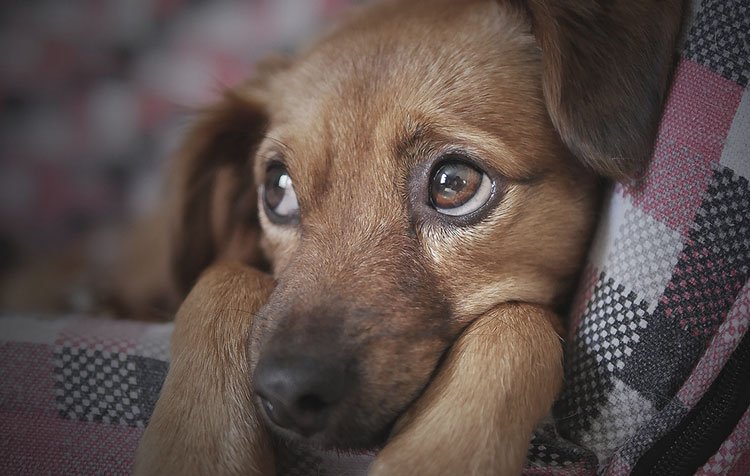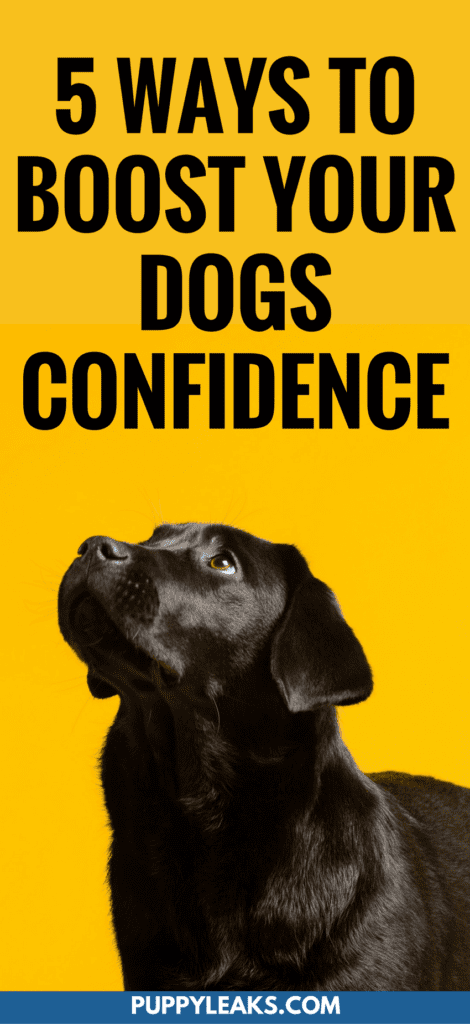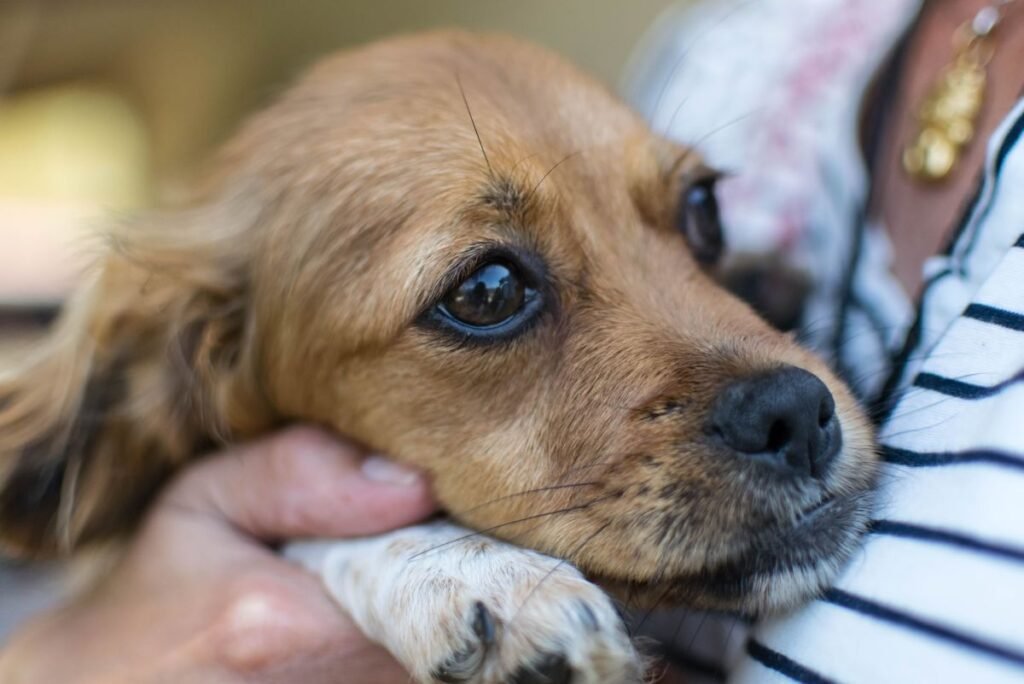Imagine taking your furry friend on a new adventure, only to see them trembling with fear and uncertainty. It’s heart-wrenching to witness their discomfort in unfamiliar situations. But worry not, because there are numerous ways to help your dog feel more secure and confident. From positive reinforcement training to creating a safe haven for them, this article will explore practical strategies to make your pup’s world a little less intimidating. So, get ready to discover simple yet effective ways to boost your dog’s confidence and see them conquer unfamiliar situations with a wagging tail!

This image is property of www.siriuspup.com.
Positive Reinforcement Training
Use treats and praise
One of the most effective ways to help your dog feel more secure and confident in unfamiliar situations is through positive reinforcement training. By using treats and praise, you can reinforce good behavior and create a positive association with new environments or experiences. Whenever your dog displays calm or confident behavior, reward them with their favorite treats or shower them with praise. This will not only make them feel more secure but also encourage them to repeat the behavior in the future.
Reward good behavior
In addition to using treats and praise, it is crucial to reward your dog’s good behavior consistently. Whether it’s sitting calmly in a new environment or successfully interacting with a stranger or another animal, make sure to acknowledge and reward these positive actions. By focusing on rewarding the behavior you want to see, you can help your dog build confidence and feel more secure in various situations.
Focus on rewarding calmness
While it’s essential to reward good behavior, it’s equally important to pay attention to your dog’s level of calmness. Rewarding calmness can help your dog feel more secure by teaching them that staying calm in unfamiliar situations is beneficial. For example, when introducing your dog to a new environment, reward them when they remain calm and composed. This will help them associate unfamiliar situations with positive experiences and gradually boost their confidence.
Use clicker training
Clicker training is an excellent technique to help your dog feel more secure and confident. It involves using a clicker, a small handheld device that emits a distinct clicking sound when pressed, to mark and reinforce desired behavior. By associating the clicker with rewards, you can effectively communicate with your dog and reinforce good behavior. Clicker training can help your dog understand what is expected of them in unfamiliar situations, giving them a sense of security and confidence.
Be consistent with training
Consistency is key when it comes to helping your dog feel more secure and confident. Establish a regular training routine and stick to it. Consistent training sessions will not only reinforce desired behavior but also provide a sense of structure and predictability for your dog. This can help them feel more secure and confident as they understand what is expected of them and have clear boundaries. Remember to be patient and remain positive during training sessions, as this will create a supportive and encouraging environment for your dog to thrive in.
Socialization
Expose your dog to different environments
Exposing your dog to different environments is crucial for helping them feel more secure and confident. Take your dog on regular walks to various locations, such as parks, busy streets, or even pet-friendly stores. This exposure will gradually familiarize them with different sights, sounds, and smells, reducing their anxiety in unfamiliar situations. Start with shorter outings and gradually increase the duration and complexity of the environments.
Introduce them to new people and animals
Introducing your dog to new people and animals is another effective way to build their confidence and sense of security. Start by inviting friends or family members over to your home, ensuring that the interactions are positive and controlled. Once your dog becomes comfortable with familiar faces, gradually introduce them to new acquaintances, such as neighbors or other dog owners. Similarly, arrange playdates with well-behaved dogs to provide your dog with positive social interactions and help them develop their social skills.
Take them to dog-friendly events
Attending dog-friendly events can be a fun and rewarding way to help your dog feel more secure in unfamiliar situations. Look for local dog-friendly events in your area, such as dog parks, outdoor festivals, or organized dog walks. These events offer opportunities for your dog to interact with various people and animals in a controlled and safe environment. It’s important to start with events that are less crowded and gradually introduce your dog to larger and busier gatherings.
Arrange playdates with well-behaved dogs
Playdates with other dogs are an excellent way to socialize your dog and boost their confidence. Seek out playmates who are well-behaved and have a calm demeanor. This will create a positive and controlled environment for your dog to gradually develop their social skills and feel secure around other animals. Monitor the playdates closely and intervene if any negative behavior or signs of insecurity arise. Gradually increase the duration and complexity of the playdates as your dog gains confidence.
Gradually increase exposure
When it comes to socialization, it’s important to gradually increase your dog’s exposure to new experiences. Start with low-stress and low-risk situations and gradually expose your dog to more challenging environments or interactions. Pushing your dog too quickly or overwhelming them with new experiences can result in heightened anxiety and insecurity. The key is to take small steps and provide gradual exposure while constantly observing your dog’s comfort level and adjusting accordingly.
Create a Safe Space
Set up a designated area for your dog
Creating a designated area for your dog can help them feel secure and provide them with a sense of ownership. Set up a comfortable space, such as a crate or a specific room, where your dog can retreat to when they need some alone time or feel overwhelmed. Make sure the area is spacious enough for them to move around comfortably and has their bedding, toys, and water bowl readily available.
Provide comfortable bedding
Comfortable bedding is essential for creating a safe space for your dog. Choose bedding that is soft and cozy, providing them with a comfortable place to rest and relax. Consider their preferences, such as whether they prefer a plush bed or a more elevated option. Providing them with a comfortable place that is exclusively theirs will give them a sense of security and ownership over their designated space.
Make sure the area is quiet and calming
A quiet and calming environment is crucial for helping your dog feel secure in their designated space. Ensure that the area is away from noisy or high-traffic areas of your home. Minimize external stimuli like loud noises or distracting activities that could potentially trigger anxiety or stress. By creating a calming atmosphere, you can help your dog feel more secure and confident in their safe space.
Use pheromone diffusers or calming music
Pheromone diffusers, such as those using dog-appeasing pheromones, can help create a calming environment for your dog. These diffusers release synthetic pheromones that mimic the ones produced naturally by mother dogs to comfort and reassure their puppies. Additionally, soothing music specifically designed for dogs can help provide a calming effect and promote relaxation. Experiment with different pheromone diffusers or calming music and observe which ones have a positive impact on your dog’s sense of security.
Allow them access to familiar items
Including familiar items in your dog’s safe space can help create a sense of familiarity and security. Consider providing them with their favorite toys, blankets, or even an article of clothing that carries your scent. These familiar items can provide a source of comfort and reassurance for your dog, especially in unfamiliar or stressful situations. By allowing them access to familiar items, you can help your dog feel more secure and confident.
Reduce Exposure to Stressful Situations
Avoid overwhelming your dog
To help your dog feel more secure and confident, it’s important to avoid overwhelming them with stressful situations. Pay close attention to their body language and behavior, especially in new environments or around unfamiliar people or animals. If you notice signs of anxiety or fear, such as trembling, panting excessively, or trying to escape, remove them from the situation and provide reassurance. Gradually expose them to new situations at a pace that is comfortable for them, ensuring their emotional well-being is the top priority.
Gradually expose them to new situations
Gradual exposure is key when helping your dog feel more secure in unfamiliar situations. Start by introducing them to low-stress and low-risk situations that are slightly outside their comfort zone. As they become more comfortable, gradually increase the complexity and intensity of the situations they are exposed to. This incremental approach allows your dog to build confidence over time and avoid feeling overwhelmed or anxious.
Reduce noise and environmental triggers
Noise and environmental triggers can contribute to your dog’s anxiety and insecurity in unfamiliar situations. Take steps to minimize these triggers by creating a peaceful and calm environment. Close windows or use soundproofing techniques to reduce external noises, such as traffic or construction sounds. Additionally, consider using curtains or blinds to block out potentially overwhelming sights, such as a busy street or unfamiliar animals passing by. By reducing noise and environmental triggers, you can create a more secure and comforting environment for your dog.
Limit interactions with unfamiliar dogs
Interactions with unfamiliar dogs can be challenging for a dog that is already feeling insecure. It’s important to limit these interactions until your dog has gained more confidence. When encountering a new dog, ensure the introductions are controlled and positive. Gradually increase the duration and proximity of the interactions as your dog becomes more comfortable. Remember, not all dogs will be a good match for your dog, so be selective when it comes to playdates or encounters with unfamiliar dogs.
Avoid forcing them into uncomfortable situations
Forcing your dog into uncomfortable situations can be counterproductive and potentially exacerbate their insecurity. Respect their limits and boundaries, and avoid pressuring them to engage in activities or interactions they are not ready for. Pushing your dog too far outside their comfort zone can increase their anxiety and erode their confidence. Instead, provide reassurance and support, and allow your dog to progress at their own pace.

This image is property of grishastewart.com.
Use Desensitization Techniques
Slowly introduce your dog to triggers
Desensitization involves gradually introducing your dog to triggers that may cause anxiety or fear. Identify specific situations or stimuli that make your dog feel insecure, and start by exposing them to a milder version of the trigger. For example, if your dog is anxious around bicycles, begin by showing them a stationary bicycle from a distance. The goal is to help your dog form positive associations with the trigger while gradually increasing their comfort level.
Start at a comfortable distance
When desensitizing your dog to triggers, it’s important to start at a comfortable distance. Gradually increase the proximity to the trigger only when your dog shows signs of being relaxed and comfortable at the current distance. This allows your dog to build confidence and gradually overcome their insecurity in a controlled and supportive environment.
Reward them for remaining calm
Throughout the desensitization process, it’s crucial to reward your dog for remaining calm and composed. Whenever your dog displays calm behavior in the presence of the trigger, offer treats, praise, or toys as positive reinforcement. This will help them associate the trigger with positive experiences and reinforce the idea that staying calm is beneficial.
Gradually decrease the distance over time
As your dog becomes more comfortable with the trigger at a certain distance, you can gradually decrease the distance between them and the trigger. Progress at a pace that is comfortable for your dog and always prioritize their emotional well-being. Remember to reward calm behavior and take a step back if your dog shows signs of anxiety or stress.
Repeat the process with different triggers
Desensitization is an ongoing process that may need to be repeated with different triggers. Each dog is unique, and the specific triggers that cause anxiety or insecurity may vary. By consistently using desensitization techniques and practicing patience, you can help your dog feel more secure and confident in a wide range of situations.
Behavioral Modification
Seek professional help if needed
If your dog’s insecurity persists or becomes overwhelming despite your best efforts, it may be beneficial to seek professional help. A certified dog trainer or a veterinary behaviorist can provide expert guidance and tailor a behavior modification plan to address your dog’s specific needs. They can assess the root cause of your dog’s insecurity and provide effective techniques to build their confidence and security.
Identify the root cause of the insecurity
Identifying the root cause of your dog’s insecurity is essential for effective behavioral modification. Insecurity in dogs can stem from a variety of factors, such as past trauma, lack of socialization, or genetic predisposition. By understanding the underlying cause, you can tailor your approach and address the specific issues contributing to your dog’s insecurity.
Implement behavior modification techniques
Behavior modification techniques can be used to help your dog feel more secure and confident in unfamiliar situations. These techniques may include counter-conditioning, desensitization, or specific exercises to build trust and confidence. A professional trainer or veterinary behaviorist can guide you through these techniques and help you implement them effectively.
Work on building trust and confidence
Building trust and confidence is crucial for improving your dog’s sense of security. Focus on strengthening the bond between you and your dog through positive and consistent interactions. Engage in activities that your dog enjoys and allow them to take the lead in certain situations. By gradually building trust and confidence, your dog will feel more secure and become more resilient in unfamiliar situations.
Address any underlying anxiety or fear
In some cases, insecurity in dogs can be linked to underlying anxiety or fear disorders. These conditions may require additional intervention, such as medication or therapy. Consult with a veterinary behaviorist to determine if your dog could benefit from these options. Addressing any underlying anxiety or fear can significantly improve your dog’s overall sense of security and confidence.

This image is property of www.careelite.de.
Provide Mental and Physical Stimulation
Engage in regular exercise
Regular exercise is crucial for promoting your dog’s mental and physical well-being. Engaging in physical activities such as walks, runs, or playtime not only helps burn off excess energy but also stimulates your dog’s mind. By providing regular exercise, you can reduce your dog’s stress levels and help them feel more secure and confident overall.
Offer interactive toys and puzzles
Interactive toys and puzzles are excellent tools for mental stimulation. These toys typically require your dog to work for their treats or toys, engaging their problem-solving skills and providing mental enrichment. By offering interactive toys and puzzles, you can keep your dog’s mind occupied and help them feel more confident and secure in their abilities.
Teach new tricks and commands
Teaching your dog new tricks and commands is a fun and rewarding way to stimulate their mental capabilities. The process of learning and mastering new commands helps build your dog’s confidence and enhances their problem-solving skills. Additionally, the structured training sessions provide a sense of predictability and security for your dog.
Provide opportunities for sniffing and exploring
Sniffing and exploring are natural instincts for dogs. Allow your dog ample opportunities to engage in these activities during walks or designated playtimes. This provides mental stimulation and allows your dog to gather information about their environment, increasing their confidence and reducing insecurity in unfamiliar situations.
Use food-dispensing toys or frozen treats
Food-dispensing toys and frozen treats can provide mental stimulation while also offering a source of comfort and security for your dog. These toys require your dog to work for their food or treats, stimulating their problem-solving skills and keeping them occupied. Additionally, frozen treats can be soothing for your dog, providing a source of comfort in unfamiliar or stressful situations.
Maintain a Calm and Confident Demeanor
Dogs can sense your emotions
Dogs are incredibly perceptive and can easily pick up on human emotions. They rely on your cues and body language to understand how to react in various situations. Maintaining a calm and confident demeanor is crucial when helping your dog feel more secure and confident. Your own emotions can directly influence your dog’s behavior, so it’s important to remain composed and positive in unfamiliar or stressful situations.
Remain calm and relaxed
When faced with new or challenging situations, it’s essential to remain calm and relaxed. Dogs look to their owners for guidance, and by staying composed, you provide them with a sense of security and confidence. Take deep breaths, relax your body, and focus on projecting a calm energy. This will help your dog feel more at ease and increase their own sense of security.
Avoid displaying anxiety or fear
Dogs are highly attuned to human emotions, and they can easily pick up on signals of anxiety or fear. Even if you feel nervous or uncertain in unfamiliar situations, it’s important to avoid displaying these emotions to your dog. Your calm and confident demeanor will help reassure your dog and communicate that there is no need for them to feel insecure.
Act as a confident leader for your dog
As a dog owner, it’s important to act as a confident leader for your dog. Dogs thrive in environments where they feel that their owner is in control and capable of handling any situation. By projecting confidence and providing consistent guidance, you can help your dog feel more secure and confident in unfamiliar situations. Lead with assertiveness and clarity, and your dog will follow your lead.
Use positive body language and tone of voice
Your body language and tone of voice play a significant role in how your dog perceives and responds to different situations. Use positive body language, such as an open posture, relaxed shoulders, and a gentle tone of voice, to communicate your dog that they are safe and secure. Avoid tense or aggressive body language, as this can heighten their insecurity and contribute to anxiety.

This image is property of www.puppyleaks.com.
Consider Natural Supplements or Therapies
Consult with a veterinarian
If your dog’s insecurity persists despite your best efforts, it may be beneficial to consult with a veterinarian. They can help rule out any medical conditions that may be contributing to your dog’s insecurity and provide guidance on potential natural supplements or therapies to consider.
Explore natural remedies like lavender or chamomile
Certain natural remedies, such as lavender or chamomile, have calming effects on dogs. These scents can help create a soothing environment that can reduce anxiety and promote a sense of security. Whether through essential oils, calming sprays, or bath products, incorporating these natural remedies can provide additional support for your dog’s emotional well-being.
Consider anxiety wraps or shirts
Anxiety wraps or shirts, such as Thundershirts, apply gentle pressure to your dog’s body, mimicking the sensation of being held or swaddled. This gentle pressure has a calming effect on dogs and can help alleviate anxiety or insecurity in unfamiliar situations. Consult with a veterinarian or dog behaviorist to determine if an anxiety wrap or shirt could be beneficial for your dog.
Use pheromone-based products
Pheromone-based products, such as sprays, diffusers, or collars, release synthetic pheromones that mimic those produced naturally by a mother dog to comfort and reassure her puppies. These pheromones help create a calming effect on dogs and can be particularly beneficial in reducing anxiety and promoting a sense of security in unfamiliar situations. Consult with a veterinarian to determine which pheromone-based products may be appropriate for your dog.
Discuss medication options if necessary
In some cases, medication may be necessary to help manage your dog’s insecurity and anxiety. If behavioral modification techniques, natural remedies, and other interventions have not been successful, consult with a veterinarian to discuss the possibility of medication. They can assess your dog’s specific needs and determine if medication could provide the additional support necessary to help your dog feel more secure and confident.
Be Patient and Understanding
Building confidence takes time
Building confidence in a dog takes time and patience. It’s important to remember that each dog is unique and will progress at their individual pace. Set realistic expectations and allow your dog the time they need to develop their confidence. Celebrate every small victory along the way, and trust that with consistent effort, your dog will continue to grow more secure and confident.
Do not punish or scold your dog for anxious behavior
Punishing or scolding your dog for anxious behavior can worsen their insecurity and erode their trust in you. Instead, focus on positive reinforcement and redirecting their attention to more desired behaviors. By providing reassurance and support, you can help your dog feel safe and encourage them to overcome their insecurity.
Celebrate small victories
Recognize and celebrate every small victory your dog achieves on their journey to feeling more secure and confident. Whether it’s successfully navigating a new environment or calmly interacting with a person or another animal, acknowledge and reward these accomplishments. By celebrating their progress, you not only boost their confidence but also strengthen the bond between you and your dog.
Understand your dog’s limits and boundaries
Every dog has their individual limits and boundaries. It’s important to understand and respect these boundaries, especially when it comes to their insecurity in unfamiliar situations. Pay attention to your dog’s body language and behavior, and don’t push them outside their comfort zone too quickly. By understanding and respecting their limits, you create a supportive and secure environment that encourages growth and confidence.
Provide reassurance and support
Consistently providing reassurance and support is crucial for helping your dog feel more secure and confident. Comfort them when they display signs of anxiety or insecurity, and provide physical and emotional support. Remember that your presence and understanding can be a source of comfort and security for your dog, so be there for them in times of uncertainty.
In conclusion, helping your dog feel more secure and confident in unfamiliar situations requires a combination of positive reinforcement training, socialization, creating a safe space, reducing exposure to stressful situations, using desensitization techniques, implementing behavioral modification, providing mental and physical stimulation, maintaining a calm and confident demeanor, considering natural supplements or therapies when necessary, and being patient and understanding. By incorporating these strategies into your interaction with your dog, you can help them overcome their insecurity and thrive in various environments. Remember that every dog is unique, so it’s important to tailor your approach to their individual needs and progress at a pace that is comfortable for them. With consistency, patience, and lots of love, your dog can become more secure and confident, leading to a happier and more fulfilling life for both of you.

This image is property of images.saymedia-content.com.
